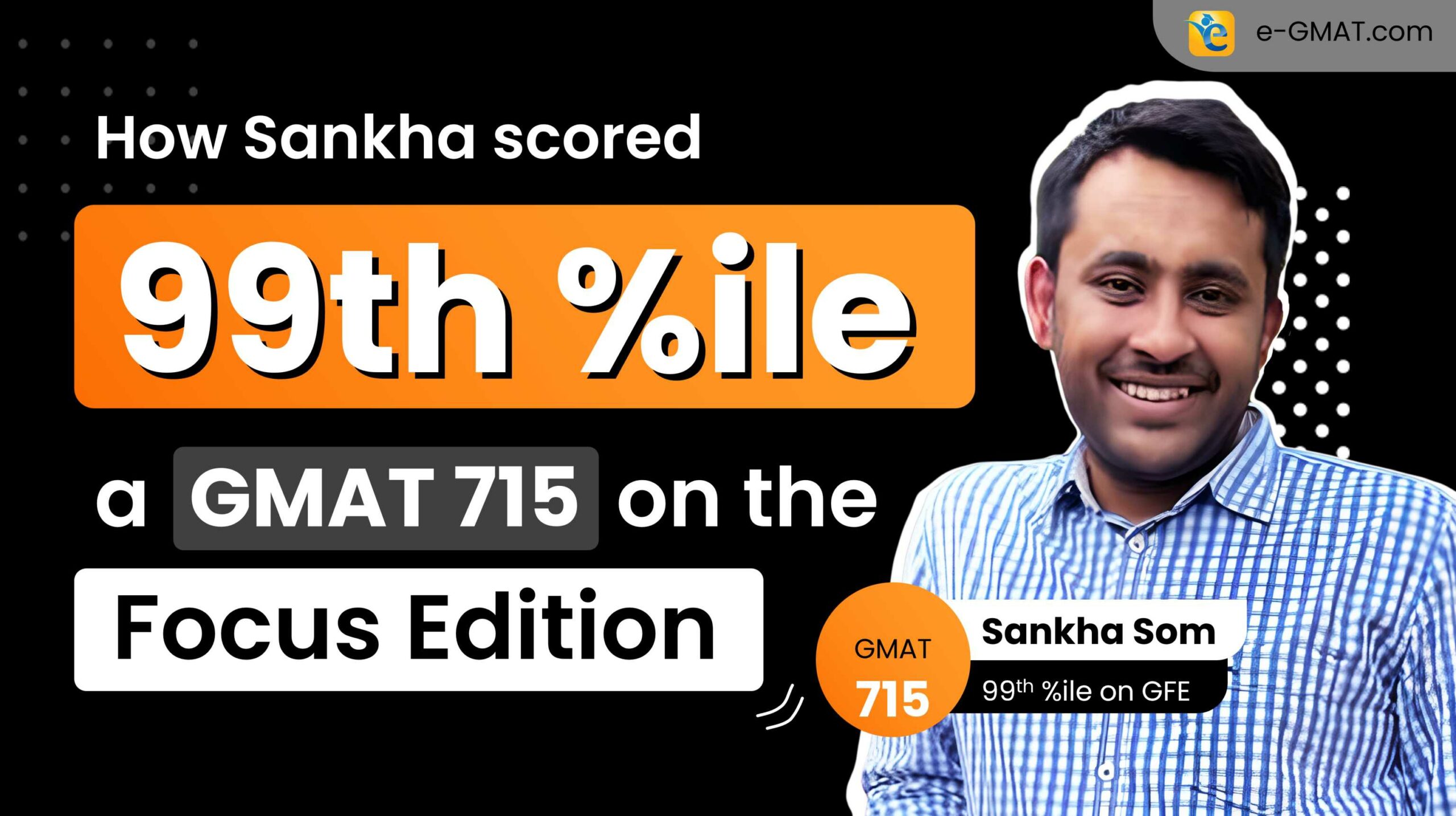Picture yourself facing a dense GMAT Reading Comprehension passage. With just minutes ticking away, you’re faced with a crucial decision: take notes and potentially waste time, or skip notes and risk missing key points? Most test-takers either spend 11-12 minutes per passage with endless re-reading or rush through without notes and struggle with questions. The truth is, strategic RC notetaking can cut your time in half – it’s all about capturing the right information in the right way.
Think of your notes as a minimalist map – every mark must serve a purpose. In this article, we will discuss three essential strategies that will transform your notetaking from a time-consuming burden into a powerful GMAT time-saving tool.
1 Ready for Differential Analysis?
Before we list out the strategies for effective notetaking, here is what you can do. Read the following two passages and create your notes. Once you are done, go through the strategies and study the notes for these passages that we will provide after discussing the strategies. Compare your notes with our notes to figure out what you are doing right and what’s not right about your notes. Differential analysis will help you learn better and lead to an effective course correction.
Passage 1: Menacingly prevalent, the common description of the phenomenon of neo-tribal digitalism entails a schismatic online/offline behavioral split, in which digital authenticity, virtual community bonds, shared digital rituals, collaborative creativity, and dedication to online identities emerge alongside an ineluctable detachment from physical social connections, which participants often dismiss as superficial and/or lacking genuine resonance.
Passage 2 (Official): Defined as an aggregate measure of production equal to the sum of the gross values added of all resident institutional units engaged in production, plus and taxes, and minus any subsidies, on products not included in the value of their outputs, GDP is a basic standard to measure the standard of living in a country and in turn the economic well-being of the population. However, critics are of the opinion that national GDP figures do not reveal significant regional variations in output, employment and incomes per head of population. They justly contend that within each region there are areas of relative prosperity contrasting with unemployment black-spots and deep-rooted social and economic deprivation and that GDP figures on their own do not represent the distribution of income and the uneven spread of financial wealth.
The idea that rising national prosperity can still be accompanied by rising relative poverty is rightly at the heart of the criticism meted out for using GDP as a measure of the general well-being of the population of a region. Changes such as increase in pollution and other negative externalities can accompany rising national output. Also, output figures reflect nothing but little on the quality of goods and services produced. Not to mention that the quality of life for many could be severely diminished if the increase in national output has been achieved at the expense of the leisure time of the workers working longer than usual hours.
Let’s now discuss the three strategies of effective notetaking.
2 The Three Dos of Strategic Notetaking
Think of your notes as a minimalist map – every mark must serve a purpose. Here are three essential strategies that will transform your notetaking from a time-consuming burden into a powerful GMAT tool:
2.1 Discover the Logical Structure
Start with brief notes as you read the passage in smaller chunks, then step back to see how they connect – like assembling puzzle pieces to reveal the bigger picture. This revealed structure becomes your roadmap for answering questions.
2.1.1 Why It Matters:
When you review your initial notes, patterns emerge – this is your passage’s DNA. Understanding these connections helps you:
- Stay focused as you read
- Build understanding progressively
- Create a clear mental map for answering questions

2.1.2 How to do it
Follow this natural reading and note-taking process:
Step 1: Read and Note Progressively
- Read small chunks of text (5-10 words)
- Note down what each chunk tells you
- Write a 5-7 word summary for each paragraph. This
- forces you to capture only the essential message
- helps you track the progression of ideas
- Repeat all the steps above for every paragraph
Step 2: Connect the Dots
- Review your notes
- Connect related ideas
- Identify the main message
- Spot the author’s perspective
2.2 Use Time-Saving Symbols and Abbreviations
Create your personal shorthand. The less time your pen spends on paper, the more time your brain spends on understanding.
2.2.1 Why It Matters:
Efficient notetaking is crucial for GMAT RC success because it:
- Saves precious time
- Reduces cognitive load – your brain focuses on understanding rather than writing
- Helps capture relationships between ideas quickly
- Makes notes easier to review at a glance when answering questions
2.2.2 Essential Symbols:
Here are a few suggestions. You can also use tables, charts, graphs, simple drawings, etc., to capture the important points from the passage that will help you answer the questions correctly.
“→” for leads to/causes/results in
“↑” for increase/rise/grow
“↓” for decrease/fall/decline
“=” for means/is defined as
“≠” for differs from/contrasts with
“∵” for because/since – cause
“∴” for therefore/thus – effect
“vs” for versus/compared to
“+” for and/additionally
“&” for and/also

3.1 Track Keywords as Direction Signals
Think of keywords as traffic signals in your passage – they tell you where the author’s argument is heading without needing to write them down.
3.1.1 Why It Matters:
Understanding keyword signals helps you:
- Predict the next turn in the argument
- Spot shifts in perspective
- Identify the author’s stance without explicit statements
- Navigate between different viewpoints
3.1.2 How to Use Keywords:
Don’t write the keywords – note what they signal:
3.1.2.1 Transition Signals:
- When you see words like “however,” “while,” “although,” etc.
→ Note: New contrasting point coming
- When you see “moreover,” “furthermore,” “additionally,” etc.
→ Note: Building on the previous point
- When you see “therefore,” “thus,” “consequently,” etc.
→ Note: Conclusion or result ahead
3.1.2.2 Author’s Attitude Signals:
- When you see “surprisingly,” “interestingly,” etc.
→ Note: Author’s reaction (+ or -) to point
- When you see “justly,” “rightly,” etc.
→ Note: Author’s strong agreement
- When you see “perhaps,” “possibly,” etc.
→ Note: Author’s uncertainty/skepticism
3.1.3.3 Source Signals:
- When you see “critics argue,” “some suggest,” etc.
→ Note: Different viewpoints introduced
- When you see “commonly believed,” “generally accepted,” etc.
→ Note: Popular view (may be challenged by the author)
- When you see
- “research shows,” “studies indicate,” etc.
→ Note: Evidence-based claim

3 Our Notes on the two passages using these strategies
Example 1: Notes on the NTD passage
Step 1: Progressive Reading and Noting (keywords and meaning suggested by them are bolded)
- Reading Chunk 1: Menacingly prevalent
→ Note: Something prevalent + author’s -ve view
- Reading Chunk 2: the common description of the phenomenon of neo-tribal digitalism
→ Note: Description of NTD (abbreviation for neo-tribal digitalism) – ≠ author’s view
- Reading Chunk 3: entails a schismatic online/offline behavioral split, in which digital authenticity, virtual community bonds, shared digital rituals, collaborative creativity, and dedication to online identities emerge
→ Note: Online-offline split – online bonds ↑
- Reading Chunk 4: alongside an ineluctable detachment from physical social connections, which participants often dismiss as superficial and/or lacking genuine resonance
→ Note: real connections ↓, seen as lacking depth, happening simultaneously, ≠ cause-and-effect
- Para Summary: NTD → online bonds ↑ & real bonds ↓
Official Example: Notes on the GDP Passage
Step 1: Progressive Reading and Notetaking (keywords and meaning suggested by them are bolded)
Paragraph 1:
- Reading Chunk 1: Defined as an aggregate measure of production… minus any subsidies
→ Note: Standard def of GDP – ≠ author’s view
- Reading Chunk 2: GDP is a basic standard to measure the standard of living…
→ Note: Common use of GDP.
- Reading Chunk 3: However, critics are of the opinion…
→ Note: Author introducing critics’ view
- Reading Chunk 4: They justly contend that within each region…
→ Note: Author agrees with critics ∵ justly – GDP masks regional ≠ & wealth distribution
- Para 1 Summary: GDP def & limitations (author + critics)
Paragraph 2:
- Reading Chunk 1: The idea that rising national prosperity can still be accompanied by rising relative poverty is rightly at the heart of the criticism…
→ Note: ↑GDP → can → ↑relative poverty, author agrees ∵ rightly
- Reading Chunk 2: Changes such as increase in pollution…
→ Note: Author listing + problems – ↑GDP → ↑pollution & neg externalities
- Reading Chunk 3: Also, output figures reflect nothing but little…
→ Note: Author’s + criticism – quantity ≠ quality
- Reading Chunk 4: Not to mention that the quality of life…
→ Note: Author’s final criticism – ↑output → ↓leisure time → ↓life quality
- Para 2 Summary: + problems with using GDP. ∴ ↑GDP ≠ → ↑well-being
- Main Message: GDP commonly used for measuring well-being but deeply flawed, author agrees with critics (MUST BE NOTED)
4 Time Management: The Notetaking Advantage
4.1 The Common Concern
Many test-takers worry: “Won’t taking notes slow me down?” The surprising answer is no – effective notetaking actually cuts your question-answering time by almost half.
4.2 Reading Without Notes vs. With Notes
4.2.1 Without Notes:
- First read: 3-4 minutes
- For each question:
- Re-read relevant parts: 45-60 seconds
- Process information again: 30 seconds
- Choose answer: 15-30 seconds
- Total per question: ~2 minutes
- For 4 questions: 8 minutes
- Total time: 11-12 minutes per passage
4.2.2 With Strategic Notes:
- First read + notetaking: 4-5 minutes
- For each question:
- Glance at your notes: 10-15 seconds
- Locate relevant info quickly: 15 seconds
- Choose answer: 15-30 seconds
- Total per question: ~45 seconds
- For 4 questions: 3 minutes
- Total time: 7-8 minutes per passage

5 Key Takeaways: Making Your Notes Work for You
5.1 Notes Are Your Navigation Tool, Not a Transcript
Strategic notes map your passage’s key points and logical flow – they don’t retell it. Focus on capturing the structure and relationships between ideas, not the details of every sentence.

5.2 Time Spent vs. Time Saved
While effective notetaking takes a minute upfront, it saves crucial minutes during question-solving by eliminating the need for constant re-reading. Remember: one minute of smart notetaking saves three minutes of searching later.

5.3 Structure, Symbols, and Signals
Win the note-taking game with three weapons:
- Capture logical structure → main ideas and key arguments
- Use time-saving symbols → arrows, abbreviations, and marks
- Track signal words → transitions and viewpoint indicators

5.4 Less is More, But Make the Less Count
Every mark on your paper should serve a purpose. Keep your notes minimal but meaningful – like a well-designed roadmap that shows only what you need to navigate successfully.

16 Practice Question
Passage:
While technological advancement invariably drives economic growth and industrial efficiency, critics argue that rapid automation simultaneously creates workforce displacement and wage depression, particularly affecting lower-skilled workers who lack alternative employment opportunities.
Which set of symbols best captures the key relationships in this passage?
A) Tech advancement = economic growth + industrial efficiency
Critics say: automation → workforce problems
∴ lower-skilled workers affected
B) Tech advancement → ↑growth + ↑efficiency
BUT critics: ↑automation → ↓jobs & ↓wages
Especially → low-skill workers ∵ ≠ options
C) Tech → economy ↑
Critics ≠ automation
Low skill = no jobs
Share the answer with us with your reasons. You can also share your notetaking tips that work for you.














